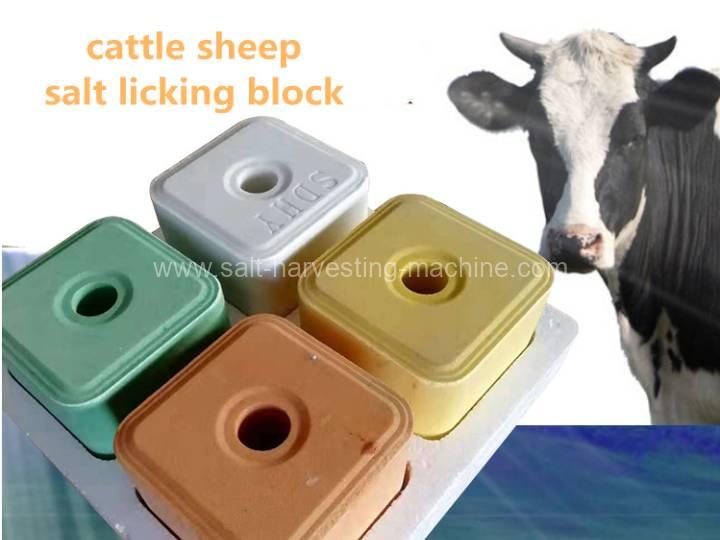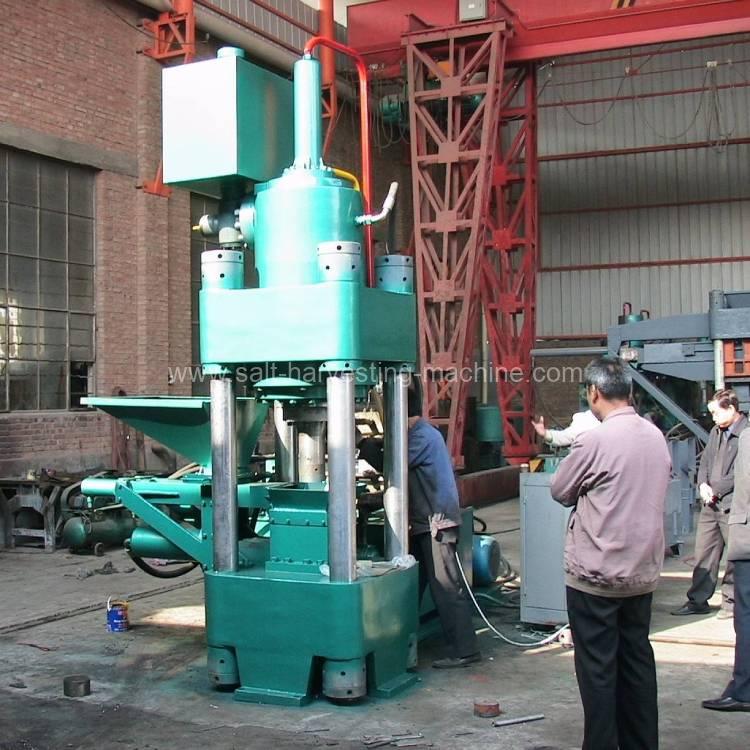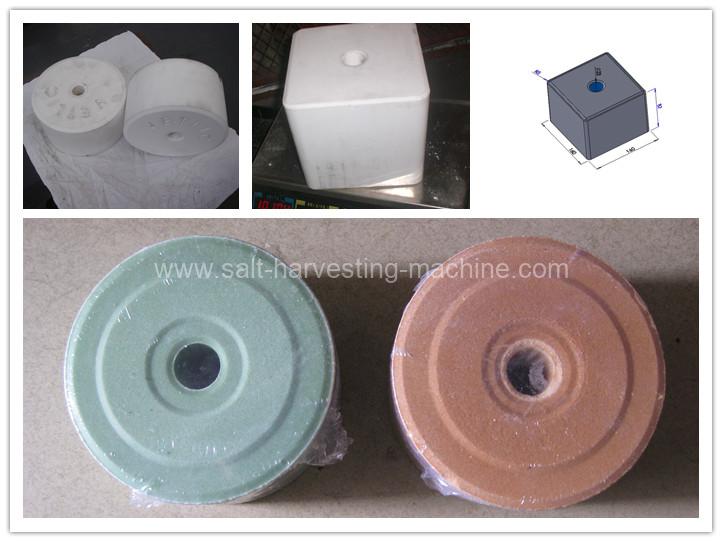What is a salt licking block?
First of all, salt licking blocks are not bricks made entirely of salt! Salt licking brick is made of chlorine, sodium, iron, copper, zinc, selenium, and other minerals and trace elements that are mixed uniformly in proportions, and then pressed by a cattle licking salt block machine. Because the bricks have a salty taste, they are commonly called “salt”. brick”. Some businesses also call it nutrient brick or mineral brick, which is more accurate.
Another reason why salt bricks are habitually called “salt licking blocks” is that the salt bricks replace the feed salt that was previously fed to sheep alone because before the salt bricks, we all feed the sheep directly with feed salt.

How is the market for sheep husbandry?
Sheep are herbivorous livestock, which is convenient for grazing and captivity and can make large use of various grasses, leaves, etc. such as pasture and straw. It has the characteristics of fast growth, strong disease resistance, a high reproduction rate, and obvious economic benefits. Mutton has outstanding edible and medicinal value. Many people like mutton very much. The boom in mutton market consumption has driven the development of the mutton sheep breeding industry. Many farmers have increased their efforts to raise sheep.
Farmers who raise sheep all want to benefit, first of all, relying on technology. If the technology is good, it depends on management. No matter which link is missing, the price of sheep cannot be reflected. Combining with local actual conditions, doing a good job in the scale development of breeding sheep in accordance with local conditions, the rapid development of large-scale, standardized breeding is an inevitable trend in the development of animal husbandry. It is the direction of the industrialization of animal husbandry. It is also an effective way to carry out animal epidemic prevention and ensure the quality and safety of livestock products. To enable animal husbandry production to achieve scale expansion and quality and benefit improvement in a short period of time.
Now the prospect of raising sheep is very attractive. Basically, every household in the countryside is raising sheep, so there is a huge profit margin. If we want large profit margins, we must do a good job in these aspects.
The first is that the sheep shed should be built in a high dry, flat, leeward, sunny, well-drained, adequate water source, and convenient for grazing. The ground is slightly inclined, there is no landslide, and the southern slope is warm in winter and cool in summer. Build a medicine bath near the pen. Scientific selection, development of economic crossbreeding, through economic crossbreeding, high-quality hybrid sheep with strong adaptability, rough feeding tolerance, fast growth, high feed return, and good fattening performance are cultivated. The feed requires high nutritional value, is rich in protein, vitamins, and minerals have good palatability, and is easy to digest. The sports field and the surrounding environment must be cleaned every day, thoroughly disinfected once a month, and the food trough, sink, and utensils must be cleaned and disinfected once a week.
Preventive deworming of the breeding flock is carried out on a regular basis. Production practice has proved that the prevention and control of parasites are the most important in the health care of large-scale sheep raising. Parasitic diseases have the greatest impact on the development and success of sheep raising. In order to increase the appetite of the sheep, salt and urea can be supplemented appropriately. It is strictly forbidden to mix soy, bean cake, alfalfa, and other feeds with feed containing urea to avoid poisoning the sheep.
With the rapid economic development and the continuous improvement of people’s living standards, the prospect of sheep breeding is promising. Prices continue to rise, and a large number of large-scale sheep farmers have emerged in rural areas. Due to the lack of large-scale sheep raising experience and breeding technology, the benefits are not very obvious, which seriously dampens the enthusiasm of sheep farmers. Therefore, it is essential to do the above measures.

Why do sheep need to lick the salt brick?
The reason why sheep need to lick the salt bricks is that they need to supplement sodium, chlorine, calcium, phosphorus, magnesium, potassium, sulfur, iodine, iron, molybdenum, copper, cobalt, manganese, zinc, selenium, and other mineral elements to maintain the sheep. The normal functioning of the body. Once one or more mineral elements are lacking, the physical fitness of the sheep will decline, and even disease will occur.
The salt licking brick is a collection of mineral elements tailored to the needs of the sheep according to the formula, allowing the sheep to meet the sheep’s mineral element needs in one stop during the licking process, without worrying about the sheep’s influence on certain mineral elements. Lack, which is why the sheep need to lick the salt licking block.
- The salt licking brick contains balanced and rich mineral elements, which can significantly improve the health, weight gain, reproduction rate and survival rate of the sheep.
- Speed up the growth and development of lambs, improve the body’s immunity, and enhance the disease resistance of lambs.
- Effectively improve the milk production and fecundity of ewes.
- It can prevent the occurrence of sheep eating and biting hair, pica, hoof disease, urinary stones, and slow growth.
How to use: Put it in the pasture or shed where it is convenient to lick food, lick food freely, and supply plenty of clean drinking water.
Will the sheep lick the salt licking brick at any time?

After many observations, it was discovered that sheep do not lick the salt brick at any time. Some sheep lick two or three times a day, and some sheep only lick once for two or three days. Sheep have sharp teeth, but they don’t bite salt. Bricks, but lick the food easily with the tongue.
Why don’t sheep eat too much? After repeatedly consulting the data, I finally found the reason: once the sheep lacks mineral elements, it will feedback to the nerve center through the peripheral nerve, and then the nerve center will direct the sheep to find the mineral elements.
There are always salt licking blocks in the sheep pen, that is, when the sheep’s nervous system sends out the demanding instructions, the sheep can eat the first time. When the sheep is not deficient in mineral elements, the nervous system will not direct the sheep to lick. This is why the salt bricks are always placed in the sheep pen, and the sheep will not overfeed. Therefore, let the sheep freely lick the salt licking brick, it will not cause harm to the sheep.

